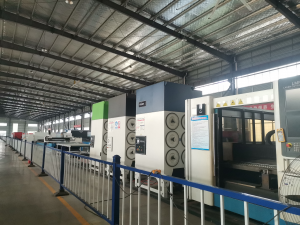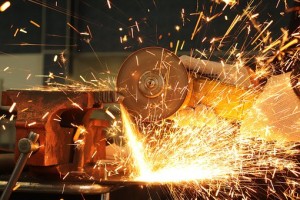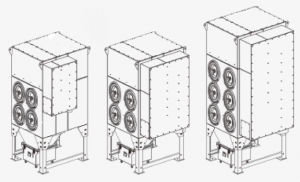Thermal cutting applications, such as plasma and laser cutting, generate large amounts of fumes and particles that can pose health risks to operators and damage to cutting machines.
Often, dust collectors are required in cutting systems to reduce worker exposure to fumes and help protect expensive cutting machine components. When designing the dust removal system, it is necessary to fully consider the challenges of various factors in the thermal cutting process to the dust collector. These factors include: dust particle size distribution, smoke concentration, system pressure loss and the risk of combustible dust.
Common Thermal Cutting Applications: Dry Cutting Tables
Cutting equipment manufacturers typically offer dry or wet cutting tables that hold the sheet being cut. For dry cutting platforms, a cartridge dust collector is usually used, and the fumes are conveyed to the dust collector through the air duct in the downdraft table.
Potential Risk and Hazard Analysis
As with any process, customers should perform a hazard analysis before selecting a dust collection solution. Sparks are usually present in any thermal cutting process and the collected dust is mostly combustible, presenting a risk of explosion, fire. Ignition source solutions should be considered with any dry dust collection system.
In addition, the risk of mixing different metals should also be considered.
In recent years, OSHA has significantly lowered the permissible exposure limits for many dusts, including hexavalent chromium. Especially for applications where chromium-containing metals are cut, such as stainless steel, the chromium is significantly higher than other common metals such as carbon steel or aluminum. In indoor emission conditions, this problem will be more prominent.
Matters needing attention in dust collector selection
The selection of the dust collector for the dry cutting platform first needs to determine the air volume required to control the overflow of smoke and dust. Generally speaking, the wider the cutting table, the more air volume is required to capture the fumes, and therefore the larger the dust collector required. Other factors also affect air volume, including the size of the extraction unit, the percentage of sheet coverage, and the number of extraction units that are on simultaneously during the cutting process.
Downdraft workbenches are often divided into multiple suction units (or zones) to reduce the total airflow required to effectively capture fumes, thereby reducing the size of the collector. Then customize the dust collector selection based on the number of cutting heads, cutting technology (laser, plasma, oxy-fuel, etc.), the material being cut, and factors such as cutting speed and torch time zone division. For larger workpieces, several cutting machines can be combined in one downdraft table.
The airflow through the cutting platform must be sufficient to create a downdraft over the surface of the platform to overcome the rising velocity of the fumes. Downdraft velocity is the minimum air velocity required to keep fumes and particles from escaping the cutting table, typically 150-250 ft/min for thermal cutting applications and will need to be adjusted based on cutting table design and size.
CSDC series dust collector solutions and advantages
The fine fumes generated by thermal cutting applications require high-efficiency cartridge dust collectors to ensure stable and reliable system operation. Our dust collector mainly has design advantages and features
Integrated design, compact structure, less land occupation, simple and convenient on-site installation, and low installation cost.
Multiple models are available to meet the air volume requirements of different cutting models.
Small size, high performance, “plug and play” design, and suitable for continuous operation.
There are four air inlet options in different directions, which is convenient for on-site pipeline connection.
Equipped with an integrated spark cooler to effectively reduce the risk of fire.
The sinking flow design enhances the filtration accuracy and cleaning effect, while ensuring safety and reliability.
Easy-to-clean dust container design.
The system can be connected with other machines for linkage operation.
The surface filter material is finely designed to achieve better filtering effect. Surface filtration performance, microfiber-coated media, and downflow airflow patterns can significantly improve dust collector performance.
1. The microfiber coating improves the filtration efficiency (through: interception, diffusion and impact mechanism), and even very fine particles can be effectively intercepted and removed from the flue gas flow.
2. The surface filtration function of the microfiber coating allows fine particles to be intercepted on the surface of the filter membrane, and can be effectively peeled off by pulse cleaning. 3. Ordinary filter materials that do not contain superfine fibers usually cause particles to embed inside the media fibers, which are difficult to be removed by pulse cleaning energy, and the pressure difference rises instantaneously, resulting in a reduction in the dust removal air volume of the cutting platform, and the smoke cannot be effectively removed.
4. The downflow airflow mode is also critical to keep the differential pressure stable for thermal cutting applications. When the pulse cleaning system is working, the downflow helps the fine particles of smoke to be discharged from the inside of the dust collector to avoid back-mixing.
Post time: 11-02-23







